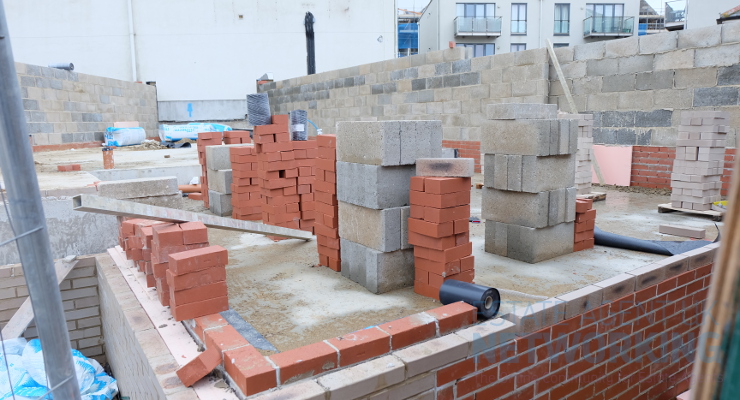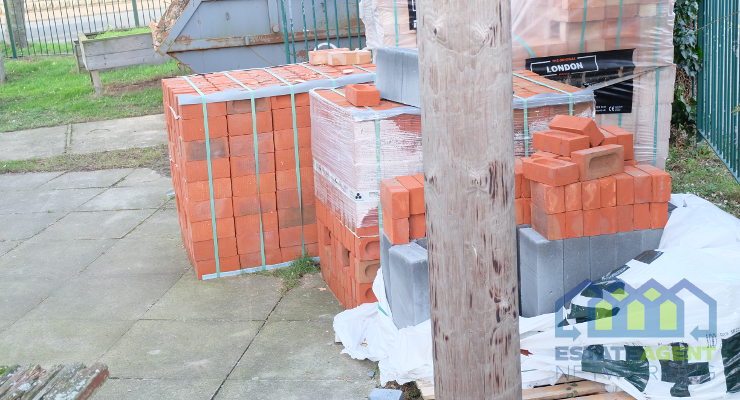Building Your Own Home: From The Ground Upwards
It is the dream of many to create and build their very own customised home. There is nothing more satisfying than finding the ideal location, getting planning permission and then getting to work on the perfect house that has been designed to your specifications.
These days that job has become much more achievable thanks to self-build mortgages which fund the project through various build stages. But where do you start with a self-build? Below is a guide to the process.
Finding The Right Location
First and foremost you need to find the right location for your building plot; somewhere you are happy with but also somewhere that you can meet guidelines and gain approval. If you are moving further afield and aren’t sure of the area then it’s best to check it all out, so find out what amenities are there, what the local community is like and gain insight to as much information as you can before you sign on the dotted line.
Remember, this is where your dream home is going to be built, and you need to be comfortable with where you will be living.
Finding An Architect
The next step is to find a designer or an architect who can start to shape your dreams into a reality. You can browse home designers online by using either Google or local directories or by obtaining a recommendation from someone you trust who has already undertaken a self-build.
One local to the property location will also have a good understanding of the requirements of the Local Authority which should make the planning application process easier.
Get In Touch With Your Local Authority Planning Department
Before any work can start you need to be granted planning permission, initially this could be outline permission, but the final detailed plans would also need approval. Each area may have different criteria on what will and what won’t be accepted – whether it’s materials being used, the size of the project or the style of the building you are looking to build. If the materials used are known as Modern Methods of Construction (MMC), they may be acceptable to the Local Authority, but not to a potential lender, so this aspect will need to be considered carefully. However, the build time may be quicker using MMC and there may be longer term environmental and energy advantages.
You will need to check the planning conditions carefully, especially as some permissions are granted but only with an agricultural tie clause or a Section 106 occupancy clause. Such clause would restrict the market and/or the valuation, and the number of lenders who would be able to assist.
Get Funding For Your Project
You may be fortunate enough to have cash available to buy the plot and fund the build, but many people require help with this aspect and this is where a self-build mortgage will help. You will need to get the best deal for your build and something that will work within your budget. Specialist providers such as esbs can offer a package that releases payments at specific stages of the build to keep cash flow running smoothly, and finance to help purchase the plot is available on most occasions
To further help with cash flow, it is possible for your monthly mortgage payments to be interest only, if required, until completion of the works and you move in.
Start The Build
Once the planning has been approved then work can start with the foundations being established. This will require preparing the site, sorting out the drainage systems and clearing any debris or vegetation.
A Couple of Extras
You will need to make sure that you are able to afford somewhere to live in the meantime. Living on-site in a caravan, or moving in with family, may be a good way of keeping costs down, and will also motivate you to get the build done as quickly as possible!
It is also worth having a contingency budget for any unexpected hurdles you may face. If this money isn’t spent you can put it towards any finishing touches such as new household appliances, landscaping work or interior design work. Usually a 10% contingency budget (of the build costs) is the minimum required.
During the build itself, you will also need to have appropriate construction insurance, with full property insurance established upon completion and occupation. And you will need an appropriate Warranty or Professional Certificate on completion, and one that is acceptable to your lender.
Your Dream Home!
Once everything has been signed off and the build has started you will receive mortgage funds at various stages of the self-build project to help you achieve the end goal of having built your dream home!
To apply for a mortgage with Earl Shilton Building Society you must be aged 18 or over. All applications will be subject to valuation, status and the Society’s Mortgage Conditions. We offer an advised sales process where we ask questions regarding your mortgage requirements/needs and your income and expenditure to ensure that we recommend the most suitable mortgage for you. We will accept applications from applicants purchasing or remortgaging in England or Wales. For further information, or for a European Standardised Information Sheet (ESIS), please call on 01455 844422 and speak to one of our mortgage advisers, visit one of our branches or email mortgage@esbs.co.uk
YOUR HOME MAY BE REPOSSESSED IF YOU DO NOT KEEP UP REPAYMENTS ON YOUR MORTGAGE









